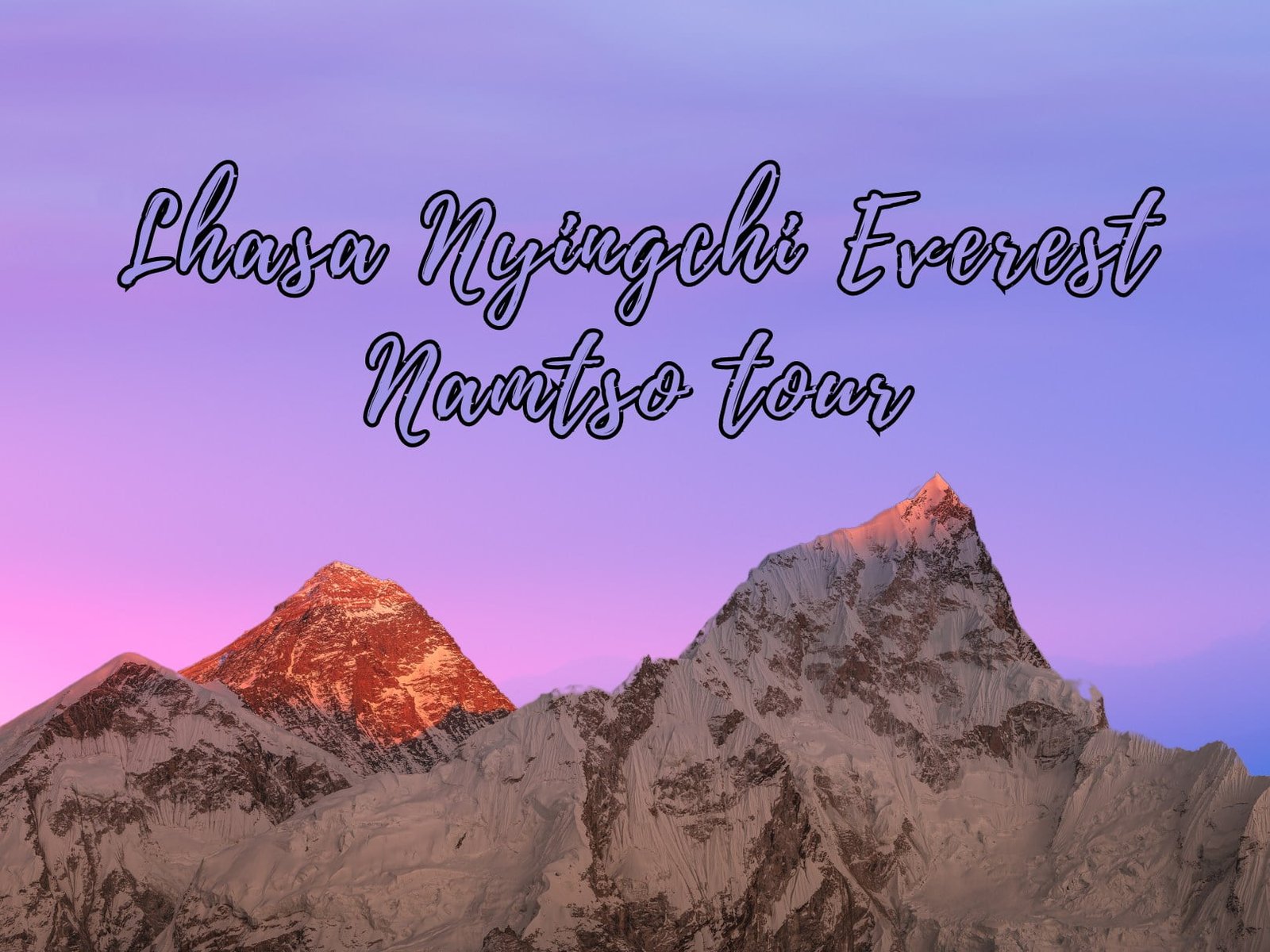Planning a trip to Tibet often means you’ll want to plan for altitude sickness when you arrive. Almost everyone experiences it to some extent, but there are ways to reduce your risk of altitude sickness on your trip to Lhasa and Everest Base Camp. Here, we provide several options to help you reduce the risk of altitude sickness when you arrive in Tibet and how to manage it effectively.
Enter Tibet on the train to reduce the risk of altitude sickness.
To enter Nepal, one has to go from Kathmandu to Gyirong port, where you have to cross the border to the town of Gyirong. In 48 hours from Kathmandu (1,400m), you will climb more than 4,300m. Climbing that fast will almost make you suffer from altitude sickness. The way from China China has more opportunities to improve and rise gradually, giving you a better chance of not feeling altitude sickness.
Stay in Xining for two nights and take the Xining-Tibet train. Tibet can be reached from mainland China by flying directly to Lhasa. However, this option does not allow you to begin exploring before arriving and is no different from entering Nepal. Alternatively, you can take a slower train that passes through the picturesque Qinghai-Tibet highway.
Trains from China to Lhasa typically start at low altitudes and ascend to 3,656 meters above sea level. However, the train from Xining begins at a higher altitude. To acclimatize, it is recommended to take a break at an intermediate level of 2000-3000 meters for 24-48 hours. Xining, located at 2,275 meters above sea level, is an ideal stopover. A two-night stay in Xining can reduce the risk of altitude sickness. The train journey from Xining to Lhasa takes 21 hours and offers beautiful views.
It’s better to spend an extra night in Sakya.
After arriving in Lhasa, which is situated at 3,656 meters, it is advisable to spend a couple of days acclimatizing and exploring the city’s famous sites. For those planning to visit EBC, the altitude change is significant, reaching 5,150 meters at the base camp. The usual itinerary involves travelling from Lhasa to Shigatse, located at 3,845 meters, and then proceeding to EBC the following day, which involves a rapid ascent of 1,255 meters in a few hours. As a result, there is a possibility of experiencing altitude sickness symptoms when staying overnight at EBC.
You can spare some time to explore the holy Sakya Monastery.
To counter rapid ascension, consider adding an extra day and visiting the renowned Sakya Monastery on the way to EBC. This allows for acclimatization to Sakya’s altitude before reaching EBC. It is advisable to ascend by a maximum of 400-500 meters per day and sleep at an altitude lower than the day’s highest point. Sakya Monastery is situated at 4,310 meters, a mere 465 meters higher than Shigatse. Consequently, resting near Sakya allows for a modest 790-meter ascent to EBC, significantly reducing the risk of altitude sickness at Mount Everest.
Spend a night in Old Tingri instead of EBC
Most Tibet tours include an EBC stop at the base camp, the Rongbuk Monastery guest house, or a tented guest house at the site itself. Although you will be sleeping at a higher altitude than you reached during the day, the difference in altitude is small and it is best to stay in the nearby Old Tingri town. At an altitude of only 4,390 meters, about 710 meters lower than EBC, you can be sure that you will not feel altitude sickness when you get there for yourself.
Not only are the mountains low enough that you don’t suffer from altitude sickness, but you also have amazing views of the Himalayas, including Mount Everest and some of the world’s tallest mountains. The accommodation is also better than EBC, with better medical care if you need it.
Tips to avoid Altitude diseases
There are different ways to help you avoid the worst symptoms of upper respiratory infection, or even prevent it altogether. By using the tips we’ve already provided and some useful local tips on how to improve, you can minimize the risk and almost never have to check for your trip to Tibet.
Arriving in a new city often inspires people to get out and explore immediately. At high altitudes, this is not recommended and you should take some time to rest and allow your body to adjust properly before heading out to explore Lhasa’s restaurants and teahouses. Allowing your body to rest will help speed up your body’s adaptations to help you overcome the effects of upper respiratory infections.
Rest well in Lhasa before exploring attractions
Exertion is a major factor in altitude sickness, and you should try and avoid any severe and extreme exertions until you are properly acclimatized. And even then, you should take care and take more time in doing things such as trekking and climbing up to the Potala Palace. Keep your strenuous activity for later on in your trip, when you will be better able to do it after acclimatizing.
Staying hydrated can prevent altitude sickness in Tibet.
Even if it’s cold, the altitude can increase your thirst, which means you’ll need to drink more water to stay hydrated. A good sign of dehydration is a headache or dark urine when you go to the bathroom. If you feel very dehydrated, rehydrating salts can help increase your hydration.
Eating well is another good habit that can help you overcome the effects of stomach flu. Protein-rich foods, such as red meat, green leafy vegetables and noodles, are good for helping with weight loss, as they help the body produce more red blood cells, which are essential for exchange. Stick to a good, high-protein diet for the duration of your trip, and you’ll feel better.
Travelling to high altitudes like Tibet doesn’t guarantee altitude sickness. It can affect some people even after coming from China. Mountain sickness is not dependent on health or fitness and can strike anyone. Our guide and tips can help reduce the risk and let you enjoy your time in Tibet.







